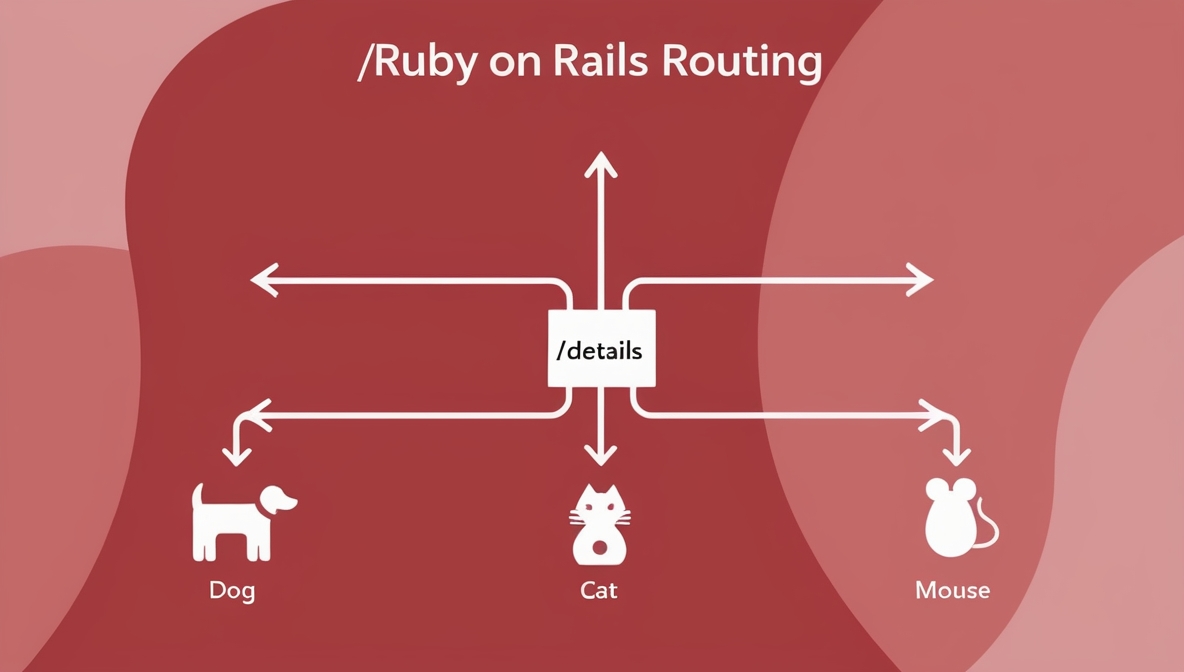Conditional Routing in Rails: Cleanly Split Controllers by Query Parameter

Conditional Routing in Ruby on Rails Using Custom Constraints
In complex Ruby on Rails applications, it’s common to route requests based on dynamic conditions, such as the value of a query parameter. One powerful way to handle such cases is to use custom routing constraints. This article demonstrates how to route the same endpoint to different controllers based on the subject_type parameter.
Problem
Suppose we want to handle updates to details of various animal types—dogs, cats, and mice—through a single endpoint like:
PUT /details?subject_type=DogInstead of writing separate endpoints or bloating a single controller with conditional logic, we can delegate requests to separate controllers using Rails’ routing constraints.
Solution: Use a Custom Constraint
We define a custom constraint class that inspects the incoming request:
class SubjectTypeConstraints
attr_reader :subject_type
def initialize(options)
@subject_type = options[:subject_type]
end
def matches?(req)
req.params['subject_type'] == subject_type
end
endThis class will be used to match a specific subject_type query parameter in the request.
Routing Setup
Using the constraints option, we define three routes under the same path and HTTP method, but each constrained to a specific subject_type value:
resources :details, only: :none do
put :update, on: :collection,
controller: '/api/dogs/details',
constraints: SubjectTypeConstraints.new(subject_type: 'Dog')
put :update, on: :collection,
controller: '/api/cats/details',
constraints: SubjectTypeConstraints.new(subject_type: 'Cat')
put :update, on: :collection,
controller: '/api/mice/details',
constraints: SubjectTypeConstraints.new(subject_type: 'Mouse')
endThis sets up three routes that all respond to PUT /details, but depending on the subject_type parameter (Dog, Cat, or Mouse), the request will be routed to the appropriate controller.
Benefits
- Clean Separation of Concerns: Each animal type has its own controller and logic.
- Scalability: Easily extendable to support more types without complicating existing code.
- RESTful Compliance: Maintains a single endpoint path while offering internal routing flexibility.
Example Requests
| Request | Routed Controller |
|---|---|
PUT /details?subject_type=Dog | Api::Dogs::DetailsController |
PUT /details?subject_type=Cat | Api::Cats::DetailsController |
PUT /details?subject_type=Mouse | Api::Mice::DetailsController |
Considerations
- If no
subject_typeis provided or it doesn’t match any of the constraints, Rails will return a 404. - Ensure controllers follow a consistent interface (e.g., same action names) to reduce confusion and duplication.
- You can further enhance the constraint logic to support headers, request body inspection, or authentication.
Conclusion
Custom route constraints in Rails offer a powerful and elegant way to handle conditional routing. By leveraging query parameters and clean controller separation, you can keep your code modular, readable, and maintainable.
